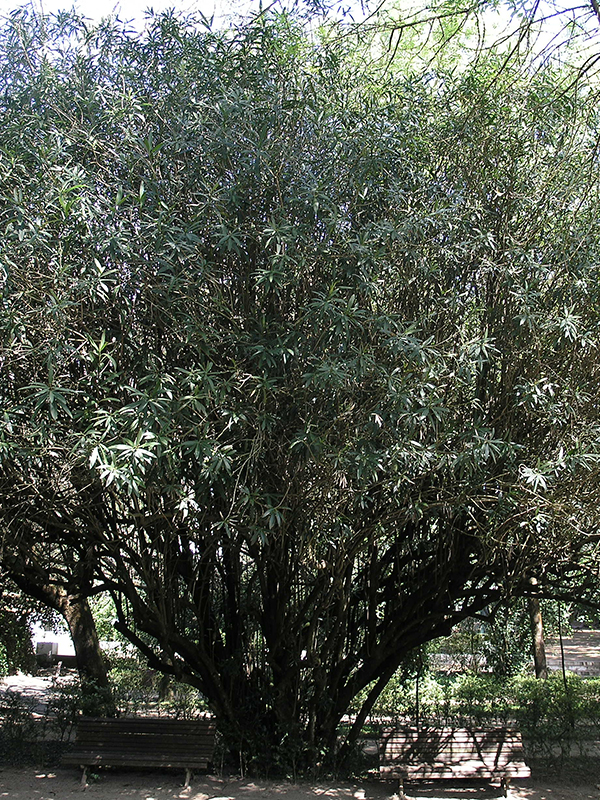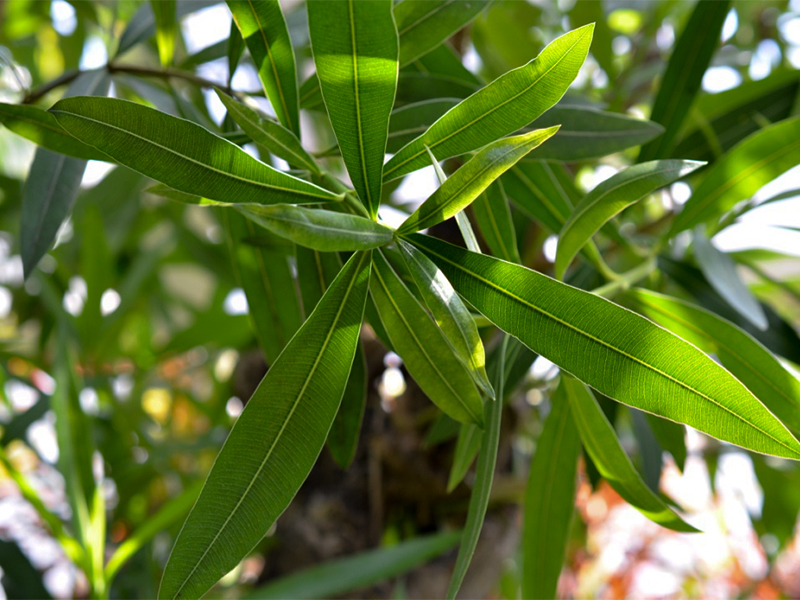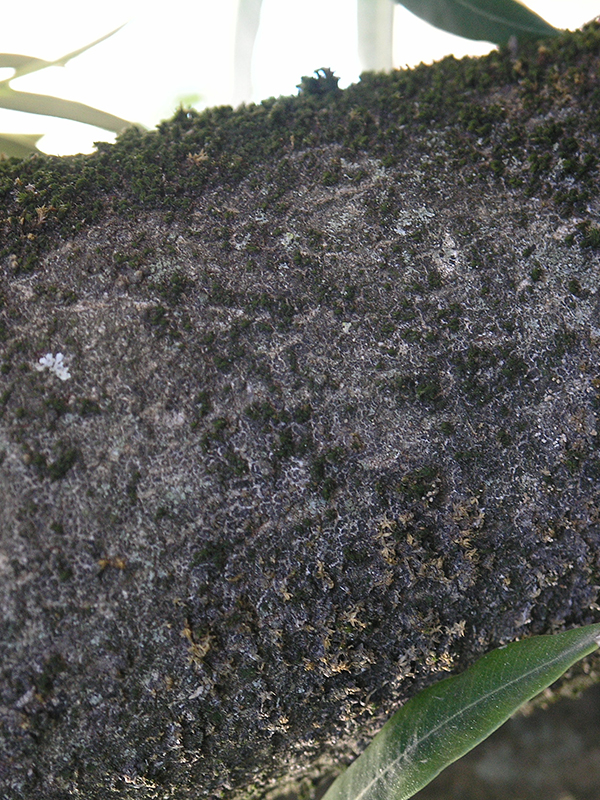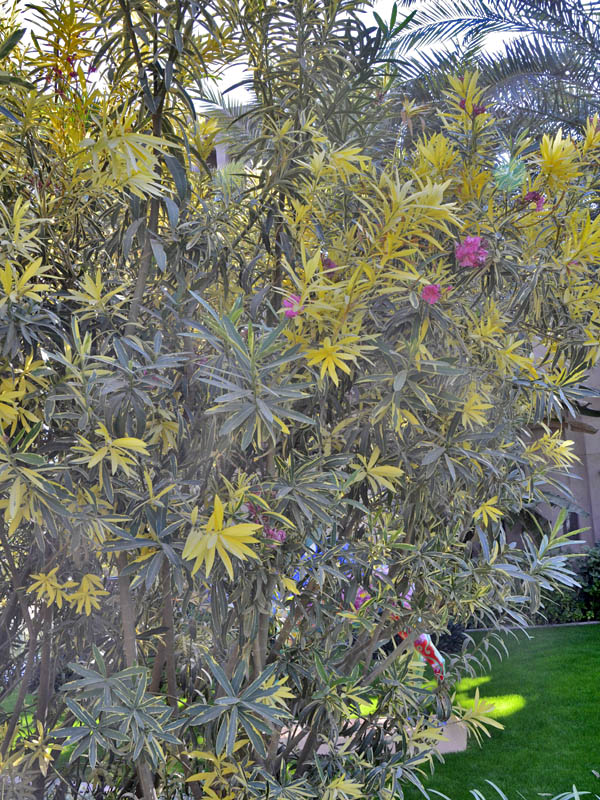
Tropicals, Woody > Nerium > Nerium oleander > Nerium oleander
Nerium oleander
Oleander, East Indian Oleander, Jamaica South Sea Rose, Laurier Rose, Rose Bay, Sweet-Scented Oleander
Origin: Europe, Eastern Asia and the Middle East.
Mike's
Opinion


"
The first plant to bloom following the atomic bomb in 1945, Oleander is the official flower of Hiroshima, Japan. Named after its physical resemblance to the olive tree, though they are completely unrelated. Having high toxicity in its foliage, Oleander is remarkably pest resistant. Often used as an accent shrub or occasionally, a houseplant for its attractive flowers.
Michael Pascoe, NDP., ODH., CLT., MSc. (Plant Conservation)
"
| Family |
| Apocynaceae |
| Genus |
| Nerium |
| Species |
| oleander |
| Category |
| Tropicals, Woody |
| Type |
| Shrub (evergreen) |
| Pronunciation |
| USDA Hardiness Zone |
| 8 - 10 |
| Canadian Hardiness Zone |
| Requires cool season protection under glass. |
| RHS Hardiness Zone |
| H2 - H5 |
| Temperature (°C) |
| -15 - 5 |
| Temperature (°F) |
| 5 - 41 |
| Height |
| 1 - 2.5 m |
| Spread |
| 1- 1.5 m |
Photographs
Description and Growing Information
Flowering Period
| General Description |
| Upright form with light coloured blooms, this plant is easily distinguished by its narrow, elliptical leaf shape and striking, delicate flowers. |
| Landscape |
| Used primarily as an ornamental plant, the aesthetic effect of an Oleander is lost if used for massing. When not in bloom, it serves as an adequate garden filler/buffer as the foliage is still quite attractive. |
| Cultivation |
| Grows well in average, medium moisture soils in full sun to part shade. Considerably tolerant of drought and poor soil conditions. Prune to maintain a somewhat regular shape, but do not trim old wood. |
| Shape |
| Upright and spreading. |
| Growth |
| Fast |
| ID Characteristic |
| 5 lobed corolla flowers with erect stems that extend outward as they grow. Leaves grow in pairs or whorls of 3. |
| Pests |
| Polka-Dot Wasp Moth, Oleander caterpillars. Xylella a bacterial disease is a serious threat to many horticultures crops due to its virulence and wide range of species it can infect. It can infect more than 560 species with wide ranging symptoms including leaf scorch, yellowing and scorching, wilt, branch and twig dieback and plant death. These symptoms can be identical to other symptoms such as drought and weather stress. Infected plants show symptoms within a few years after planting. |
| Habitat |
| Found frequently beside dry stream beds. |
| Bark/Stem Description |
| Bark produces a sticky sap. |
| Leaf Description |
| Leaves are thick and range in size from 5 - 21 cm in length by 1 - 3.5 cm in diameter. |
| Flower Description |
| Large, extended flower buds reach a maximum of 4 cm in length and 2 cm in width (at the midpoint). Grows rapidly, consisting of 5 petals. They grow at the end of branches in clusters, and are approximately 2.5 - 5 cm in diameter. They produce a lightly sweet fragrance. |
| Fruit Description |
| Long and narrow; the fruit is a dehiscent (5-23 cm in length) and contains many tiny seeds. |
| Colour Description |
| Flowers in the wild are pink or white (cultivars produced in nurseries have greater range in colour). The bark varies in shades of grey, depending on the age of the wood. Foliage is a deep, medium green. Fruit is usually brown in colour with an orange-yellow tinge where the flesh is thinnest. |
| Texture Description |
| The bark is ridged but not rough; newer growth has medium smoothness. Leaves are leathery. Flowers are smooth. |
| Notable Specimens |
| Centennial Conservatory, Thunder Bay, Ontario, Canada. |
| Propagation |
| By cuttings and seed. |
| Ethnobotanical Uses (Disclaimer) |
| Poisonous if ingested. Despite this, seeds and leaves are used to make medicine for heart conditions, asthma, epilepsy, cancer, painful menstrual periods, leprosy, malaria, ringworm, indigestion, venereal diseases, and to cause abortions. Can also be applied topically for skin problems and warts. |





